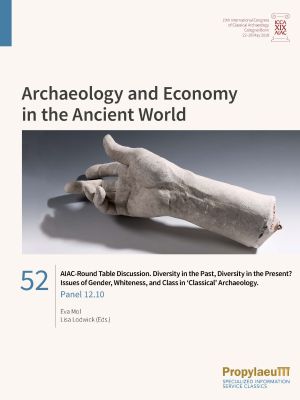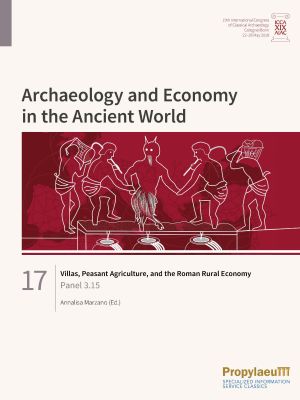Lodwick, Lisa
AIAC-Round Table Discussion. Diversity in the Past, Diversity in the Present? Issues of Gender, Whiteness, and Class in ‘Classical’ Archaeology: Panel 12.10
This small volume within the AIAC-proceedings is the result of a panel discussion on diversity in Classical Archaeology, and can be read as a call and pamphlet for more inclusivity and social justice in the field. In light of the dismay of many concerning the initial all-male keynote panel at AIAC2018, the panel was aimed at discussing broader issues concerning diversity and intersectionality in Greco-Roman archaeology. As archaeologists, we have made it one of our principal tasks to bring to the fore ‘the people without history’ and show a more diverse image of the Greek and Roman past. Then why is this diversity not reflected in the discipline itself? The all-male panel was symptomatic of more fundamental problems that the discipline suffers from, both in terms of gender and its inseparably related issues of whiteness, class, and the ‘Classical’. The AIAC-panel proved to be a constructive and empowering meeting ground, where vital matters of inequality and injustice were discussed, as well as the discipline’s capability of moving towards a more self-reflexive and socially engaged future. The contributions in this volume count as a reflection of this fruitful and ongoing debate, which will hopefully lead to more awareness as well as more dialogue.
Villas, Peasant Agriculture, and the Roman Rural Economy: Panel 3.15
The Roman villa was a defining element of the Roman world and its appearance and spread, both in various regions of Roman Italy and abroad, have been linked to various historical phenomena: Rome’s territorial expansion, the establishment of colonial settlements, and the indigenous elites’ readiness to participate in forms of Roman life. While traditional historiography has seen the spread of large villas in Republican Italy as a phenomenon that displaced small and medium landowners from the land, and thus contributed to Rome’s socio-political problems, recent studies have stressed that large villas and farms were not at variance with each other. The papers gathered in this volume aim at giving a more organic evaluation of how the ‘villa economy’ and the ‘peasant economy’ operated, and to what degree, if any, the two were integrated. It does so by addressing two main questions: whether villas and small and medium farms were part of two distinctive productive and distributive systems or not; and to what extent the picture emerging from provincial territories compares with the situation in Roman Italy.








